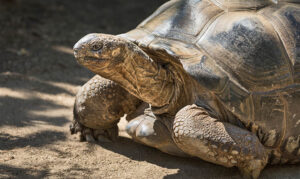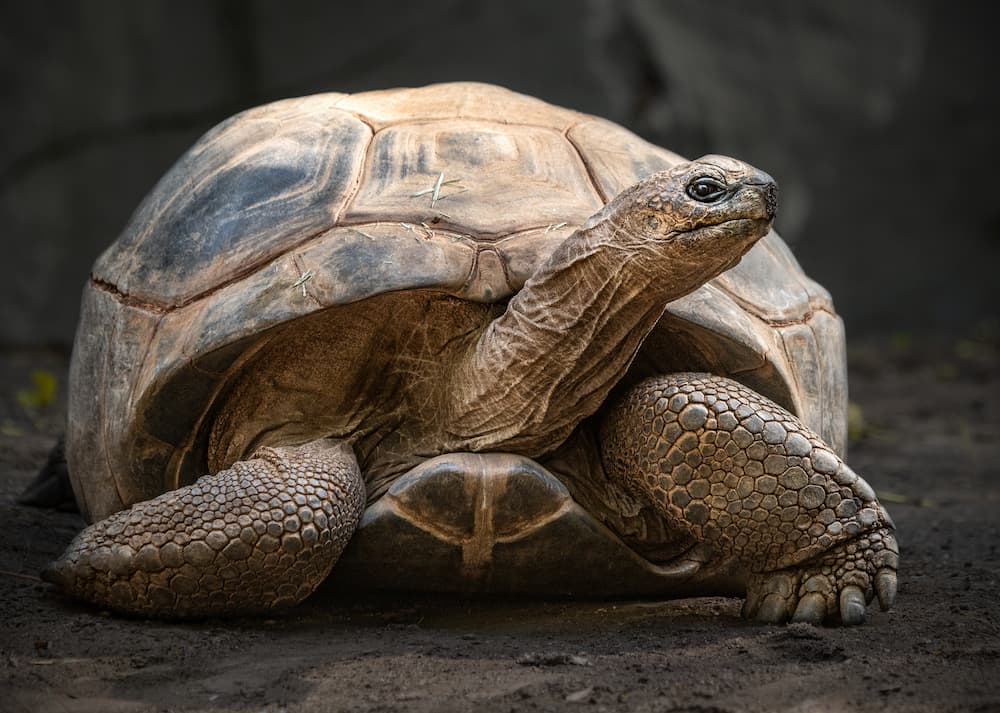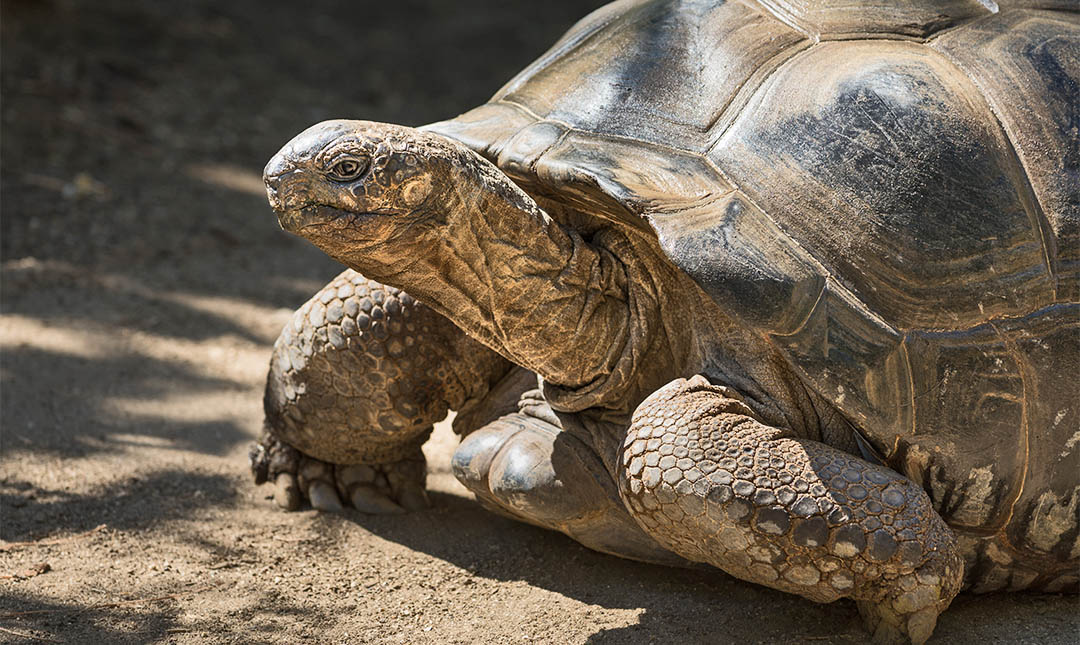About
The Aldabra tortoise is among the longest living animals on earth with a lifespan of 150 years or more. Native to an island located off the east coast of Africa, these giants are, on average, only slightly smaller than their relatives found on the Galapagos Islands off the coast of South America. Both Aldabra and Galapagos tortoises are examples of island gigantism, wherein species can grow much larger than their mainland ancestors due to an absence of predators.
Living on an arid island has its challenges, so these tortoises have many special adaptations that help them survive. Thanks to a special structure inside their noses, they can swallow rainwater that accumulates in rock crevices by sucking it up through their nostrils! Considered living tractors, Aldabra tortoises knock over small trees and shrubs to reach nutritious food. Their back legs are cylindrical and columnar, resembling an elephant’s. As they forage, they create pathways and clearings for other animals. Aldabra tortoises do not have teeth, but their beaks have finely serrated edges to cut grass and herbs. Their heads and necks can fully retract into their carapace (shell) to provide protection.
In 1874, renowned naturalist Charles Darwin successfully petitioned for the protection of Aldabra tortoises and set up a breeding program. In 1982, the Aldabra Atoll was declared a UNESCO World Heritage Site, offering additional protection. However, the species is vulnerable because the population is concentrated on these few islands which are impacted by human development, climate change, and natural disasters.


Status
Thanks to renowned naturalist Charles Darwin, who successfully petitioned for the protection of these shy, slow-moving creatures, the Aldabra tortoise still survives in its Indian Ocean home. However, the species is listed as Vulnerable by the International Union for Conservation of Nature (IUCN) because its small home islands are at risk of natural disasters and human development.
Habitat
This species is native to the Aldabra Atoll in the Seychelles, an island country located in the Indian Ocean off the east coast of Africa. The atoll is only 18 miles long and is made up of four islands surrounding one of the largest lagoons in the world. The tortoises’ habitat includes grasslands, scrub, and mangrove swamps.
Diet
Herbivorous, they graze on sedges, grasses, and small plants in drier open areas, and browse on woody plants in wooded and scrub areas. They occasionally eat carrion, usually dead land crabs and other tortoises.
Physical Characteristics
Adults are 3 to 4 feet long on average and weigh 350 to 500 pounds. Males are 30 percent larger than females. The largest Aldabra tortoise ever documented was 4 feet, 5 inches long and weighed 900 pounds.
LOCATION WITHIN THE ZOO
You’ll find this animal in the South America section. See Zoo Map.



